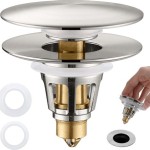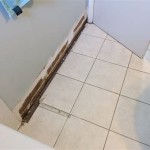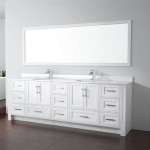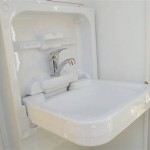Antique Bathroom Sinks: A Timeless Elegance for Modern Homes
Antique bathroom sinks offer a unique opportunity to infuse character and historical charm into contemporary homes. Beyond their functional purpose, these sinks serve as focal points, adding a touch of elegance and sophistication often absent in modern, mass-produced fixtures. Understanding the appeal, types, and considerations associated with antique bathroom sinks is crucial for homeowners seeking to integrate these historical elements into their living spaces.
The Enduring Appeal of Antique Bathroom Sinks
The allure of antique bathroom sinks stems from several factors. Firstly, their craftsmanship often surpasses that of modern equivalents. Before mass production took hold, skilled artisans meticulously crafted each sink, paying close attention to detail and using high-quality materials. This dedication resulted in durable and aesthetically pleasing pieces that have withstood the test of time. The imperfections inherent in handmade items add a unique character that no modern machine can replicate.
Secondly, antique sinks represent a tangible connection to the past. Each scratch, stain, and subtle imperfection tells a story, hinting at the lives and eras the sink has witnessed. This historical context can add depth and meaning to a bathroom's design. Furthermore, owning an antique sink is a sustainable choice. By repurposing existing fixtures, homeowners contribute to reducing waste and minimizing the environmental impact associated with manufacturing new products. This aspect resonates with an increasingly eco-conscious consumer base.
Finally, the aesthetic diversity of antique sinks is a significant draw. From ornate Victorian pedestal sinks to sleek Art Deco wall-mounted basins, the range of styles available caters to a wide variety of tastes and design preferences. This allows homeowners to find a sink that perfectly complements their existing décor or serves as inspiration for a complete bathroom renovation. The individuality of each piece ensures that no two bathrooms featuring antique sinks are exactly alike.
Types of Antique Bathroom Sinks
Antique bathroom sinks encompass a wide array of styles, each reflecting the design sensibilities of its specific era. Recognizing these distinctions is essential for selecting the right sink to suit a particular bathroom's aesthetic.
Pedestal Sinks: Arguably the most recognizable type of antique sink, pedestal sinks feature a basin supported by a single, freestanding base. These sinks were particularly popular during the Victorian era and continue to be highly sought after due to their elegant and space-saving design. Pedestal sinks come in various sizes and styles, ranging from simple and functional to ornate and decorative. Common materials include porcelain, vitreous china, and cast iron with enamel coatings. One-piece pedestal sinks offer a seamless look, while two-piece designs, with a separate basin and pedestal, allow for easier installation and potential customization.
Wall-Mounted Sinks: These sinks, as the name suggests, are mounted directly onto the wall, creating a sense of openness and maximizing floor space. Wall-mounted sinks were prevalent in the early to mid-20th century, particularly during the Art Deco period. Their clean lines and minimalist design make them ideal for smaller bathrooms or those with a more contemporary aesthetic. Antique wall-mounted sinks often feature streamlined shapes and simple hardware, emphasizing functionality and understated elegance. The exposed plumbing can either be concealed or celebrated with decorative pipes and fittings.
Console Sinks: Console sinks bridge the gap between pedestal and wall-mounted designs. They feature a basin supported by legs, typically made of metal or wood. This design offers a more substantial and luxurious feel compared to pedestal sinks while still providing some of the space-saving benefits of wall-mounted models. Console sinks were popular in the early 20th century and often feature intricate detailing on the legs and basin edges. The open space beneath the sink can be used for storage or simply left clear to enhance the sense of spaciousness.
Corner Sinks: Designed to fit snugly into a corner, these sinks are ideal for maximizing space in small bathrooms. Antique corner sinks are often found in Victorian-era homes and can be either wall-mounted or supported by a small pedestal. Their unique shape and space-saving design make them a practical and aesthetically pleasing option for bathrooms where every inch counts. These sinks often feature a triangular basin and simple, functional design elements.
Vanity Sinks: While not always strictly "antique" in the traditional sense, vintage vanity sinks feature a basin integrated into a cabinet or countertop. Antique vanities can be repurposed with a new sink, or vintage vanities featuring original sinks can be highly sought after. These sinks offer ample storage space and provide a more conventional look compared to other antique options. The vanity itself can be the antique element, featuring ornate carvings, unique hardware, or a distressed finish. The sink basin can be either undermount, drop-in, or vessel style, depending on the vanity's design.
Considerations When Purchasing and Installing Antique Bathroom Sinks
Acquiring and installing an antique bathroom sink requires careful consideration to ensure a successful and aesthetically pleasing outcome. Several factors must be evaluated before making a purchase.
Condition and Authenticity: Thoroughly inspect the sink for any cracks, chips, or significant damage. While minor imperfections are to be expected in antique items, structural damage can compromise the sink's integrity and longevity. Verify the sink's authenticity by researching its manufacturer, style, and era. Look for markings or stamps that can help trace its origins. Consulting with an antique expert can provide valuable insights and help avoid purchasing a replica or reproduction.
Plumbing Compatibility: Antique sinks may have different plumbing configurations compared to modern fixtures. Before purchasing, carefully assess the sink's drain size, faucet hole configuration, and water supply connections. Adapters or modifications may be necessary to connect the sink to existing plumbing lines. Consulting with a qualified plumber is essential to ensure a seamless and functional installation. Consider the type of faucet that will complement the sink's style and functionality. Period-appropriate faucets can enhance the sink's aesthetic appeal and maintain its historical authenticity.
Size and Scale: Ensure that the sink's dimensions are appropriate for the available space in the bathroom. Consider the sink's height, width, and depth, as well as its overall proportion relative to other fixtures and furnishings. A sink that is too large can overwhelm a small bathroom, while a sink that is too small may appear out of place in a larger space. Carefully measure the installation area and compare it to the sink's dimensions to ensure a proper fit.
Restoration and Repair: Depending on the sink's condition, some degree of restoration or repair may be necessary. Minor chips and scratches can often be repaired with epoxy or enamel repair kits. More significant damage may require professional restoration services. Consider the cost of restoration when evaluating the overall value of the sink. Cleaning antique sinks requires gentle methods to avoid damaging the finish. Avoid harsh chemicals or abrasive cleaners, opting instead for mild soap and water or specialized cleaning products designed for antique porcelain or enamel.
Installation Challenges: Installing an antique sink can present unique challenges compared to installing modern fixtures. Due to their age and potential fragility, antique sinks require careful handling and specialized installation techniques. Wall-mounted sinks, in particular, may require additional reinforcement to ensure they are securely attached to the wall. Pedestal sinks may require shimming to ensure they are level and stable. Hiring a qualified plumber with experience in installing antique fixtures is highly recommended to avoid damage and ensure a proper installation.
Water Conservation: Antique sinks were not designed with water conservation in mind. Older faucets and fixtures may consume significantly more water than modern, low-flow alternatives. Consider retrofitting the sink with a water-saving faucet or aerator to reduce water consumption without compromising its aesthetic appeal. This is particularly important for homeowners who are environmentally conscious or who live in areas with water restrictions.
By carefully considering these factors, homeowners can successfully integrate antique bathroom sinks into their homes, adding a touch of timeless elegance and historical charm to their bathrooms. The unique character and craftsmanship of these fixtures offer a refreshing alternative to mass-produced modern options, creating a space that is both functional and aesthetically pleasing.

Antique Bathroom Sinks

Wide Variety Of High Quality Bathroom Sinks Vintage Tub Bath

Vintage Bathroom Sinks House Crazy Sarah

Antique Bathroom Sinks

How To Find Antique Bathroom Sinks Perfect Bath

36 Inch Cast Iron High Back Farmhouse Sink Vintage Tub Bath

1946 Vintage Standard Shelfback Lavatory Sink W Faucet Dea Bathroom Machineries

Buy Antique Style Bathroom Vanities Modern

How To Get A Victorian Sink For Your Bathroom Ideas

Bathroom Vanity Antique We Find Convert From Furniture Wood Finish Renovation Remodeling 61 To 66 Wide
Related Posts







